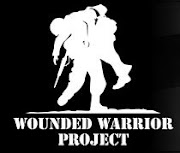
Javier Alvarez
Javier did three combat tours in Iraq during his military service. He saw extensive fighting.
On January 3, 2003, Javier was deployed to Iraq, among the first Americans sent there as part of Operation Iraqi Freedom. After making contact with the enemy at the port town of Umm Kasar, Javier’s unit proceeded to Al Basra and then to the city of An Nasiriayah. For the rest of this tour, the unit did security patrols, and assisted the civilian populations in whatever ways were possible.
Javier returned to the States after just a few months, but was back in Iraq on February 28, 2004, in time to participate in the First Battle for Fallujah. “We were there to relieve an airborne unit. We saw plenty of firefights and took a lot of IED hits.” (An IED is an improvised explosive device, a crude bomb or landmine, usually homemade, that is used by the insurgents and terrorists fighting American forces in Iraq. They have caused a large number of deaths and very severe disabilities among our troops in both Iraq and Afghanistan.)
“We did anti-mortar patrols and we ran a sweep of the city [of Fallujah]. We took casualties whenever we went into the city – rocket-propelled grenades and small arms. But we kept pushing into the city over a period of several weeks in a controlled advance on the enemy.”
After the First Battle for Fallujah, Javier’s unit pulled out of the city and did highway patrols outside the city. During this deployment, 20 Marines from Javier’s unit were killed in action. “I don’t know how many were wounded in action,” said Javier; “but it was many. Many.” Javier returned to the States on Oct. 14, 2004.
Javier was awarded the Navy Achievement Medal with Valor Device for his service during this deployment. His unit was doing a street patrol when they were ambushed. When Javier saw what was happening, he ran back to help, with enemy rounds impacting against a wall just inches from his head.
Javier’s third tour in Iraq ran from July 17, 2005 until he was wounded on Nov. 16, 2005. His unit was first tasked with providing highway security along a main supply route around the area of Al Asad Airfield.
After that, they participated in Operation Steel Current, clearing enemy fighters out of three cities in the northern part of Iraq, near the Syrian border. They encountered few problems and took no casualties in the first two cities, but they made contact with the enemy in the third city and one member of Javier’s platoon was killed in action. Another platoon suffered far more killed and wounded that day, Javier reported.
Next, Javier’s unit was assigned to tank security, and they continued their clearing activities into farm areas. On Nov. 16, 2005, the unit saw enemy forces. A tank took off after them, and there was AK-47 fire in return. Javier’s platoon took cover as the tank shot out some houses. As the platoon approached a house, they saw there were enemy out back.
Javier shot. As he reloaded, He was shot by a guy who was already down. He got behind a wall, and shot into a window. The enemy threw a grenade out the window. Javier picked it up and tried to throw it away from himself and the men he was with, but it blew his hand off.
“Five of our guys were killed that day. Eleven were wounded. Heroic things happened, I can tell you. Altogether, 18 insurgents were killed. And we uncovered a huge weapons cache.”
But everything went black for Javier. And when his consciousness returned, his hand was gone and he had four bullet wounds in his legs. His buddies put a tourniquet on his arm, and he waited for a helicopter to take him to medical care.
After he was stabilized in Iraq, he was whisked off to the Army’s Landstuhl Regional Medical Center in Germany for three days. From there he went to Bethesda Naval Medical Center for three months, Walter Reed Army Medical Center for five months, and Brooke Army Medical Center for ten months. It’s a long process of hospitalization and rehabilitation, but it takes a long time to recover from the extensive wounds Javier suffered … and then to learn the use of a myoelectric hand. But Javier likes this high-tech prosthetic device and uses it 95% of the time.






No comments:
Post a Comment